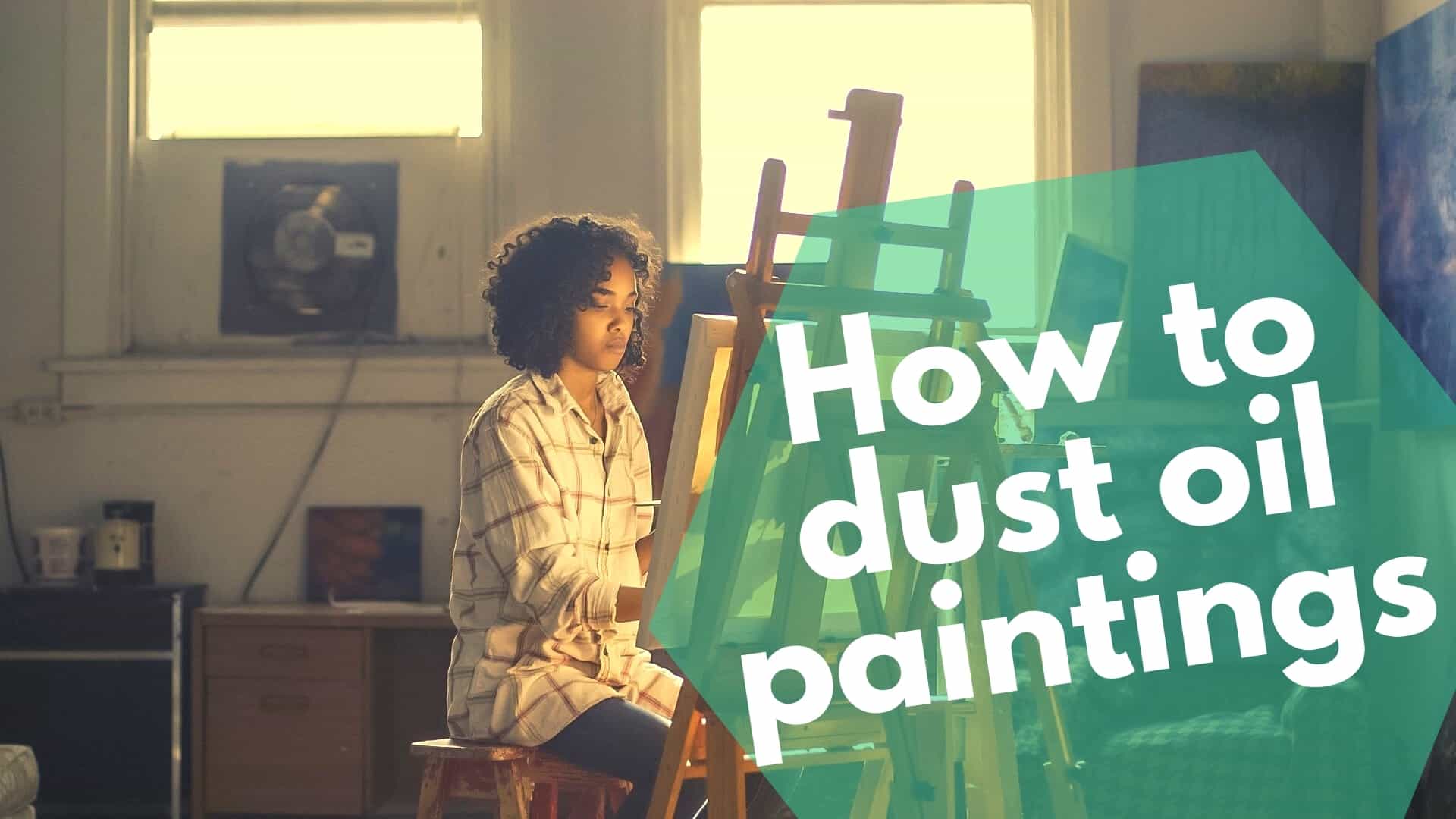Oil paintings are lovely pieces of art.
However, they can be difficult to keep clean. The oily surface easily attracts lint so it is difficult to clean with a paper towel or fibrous cloth.
That leaves us with the question, how do you dust an oil painting?

After all, there has to be a way.
Well, the good news is, there are several methods you can use to dust oil paintings. Read on to find out more.
In this post we'll cover:
Varnish Your Paintings
Before discussing what you can do if your painting becomes dusty, let’s take a look at one way you can keep your painting from getting dusty in the first place…varnish it.
Varnishing your painting will protect it from dust and it will also bring out the deep colors in the painting.
Of course, varnishing is typically performed by the artist themselves and not someone who purchased the painting.
If you purchased the painting it is hopeful that it already has a coat of varnish on it.
On the other hand, if you painted the painting yourself, adding varnish is advisable.
If paintings are heavily textured, you will want to wait one year before applying varnish. If it just has an average coat of paint you can wait six months.
Varnishes come in matte or gloss, brush on or spray. Choose the one that works best for you.
What Not To Do When Dusting Your Oil Paintings
If you are seeing dust on your oil paintings and start to browse the internet, be warned. There is a lot of false information regarding how to clean an oil painting.
Many people say using a piece of bread will be effective. Odd as this sounds, this method can be used to remove dust.
People say you can just wipe the bread with a cloth, take a handful of the inside of an unsliced loaf and press it against the painting to remove dust. Then take the cloth to remove the dust.
(Note, the inside of a baked potato is said to have a similar effect).
However, while this can be effective in getting rid of the dust, it is difficult to get the pieces of bread out of the painting.
This will attract pests working to replace one problem with another.
Others recommend cleaning oil paintings with a cotton swab soaked with baby oil or vinegar.
While this seems to eliminate the dust by making it look shiny, the oil just ends up sitting on the painting’s surface to attract more dirt and dust.
Alcohol can be effective in cleaning off a smear or smudge, but it will also take the paint right off.
Even a feather duster can be harmful to the painting. The barbs and the feathers can get stuck on the painting to cause scratches.
How to Remove Dust from an Oil Painting
So what is the best solution for dusting off your paintings?
Here are some approaches you might take.
A Sable Brush
One option is to clean the painting with a soft, dry sable brush, like these ones.
Here are the steps you will want to take in this process:
- Set the painting on a table. While you can clean the painting while it’s hanging on the wall, taking it down and putting it on a table will give you access to those hard to reach places.
- Use a soft sable brush to clean the painting. Note, it’s very important that the brush is soft. Even feather dusters can leave behind bristles that can scratch the painting.
- Work in sections dusting the painting a few inches at a time and working from top to bottom.
Cleaning with Saliva
This may seem like an unlikely option, but many museum curators clean paintings using this method.
That’s something to think about, next time you are in a museum.
Here’s how it’s done:
- Use saliva to dampen one end of a cotton swab.
- Test a small section of the painting to make sure it will not react badly with the saliva.
- If all is well, work on the painting cleaning it one square inch at a time. (It’s a bit time consuming but it’s thorough).
- Switch out swabs once they get dirty.
Cleaning with Lemon Juice
Lemon juice can also be effective in cleaning dust from paintings.
Here are the steps you will need to take:
- Drip a few drops of lemon juice into water. After a minute or so, remove any pulp that may have gotten into the water.
- Dampen a cotton ball with the solution and squeeze out any excess.
- Dab the painting until one section is wet. Then move the cotton across the painting, so the surface is damp.
- Dampen a cotton ball in water and brush over the surface to remove the lemon juice. Then allow to dry.
If your oil paintings are starting to look dusty, these solutions should restore their luster so they look great in no time.
What methods do you recommend for getting your artwork looking its best?
Read on for more tips to keep your valuables safe and clean: Best Way to Dust Figures & Collectables: Take Care Of Your Collection.
I'm Joost Nusselder, the founder of Tools Doctor, content marketer, and dad. I love trying out new equipment, and together with my team I've been creating in-depth blog articles since 2016 to help loyal readers with tools & crafting tips.
